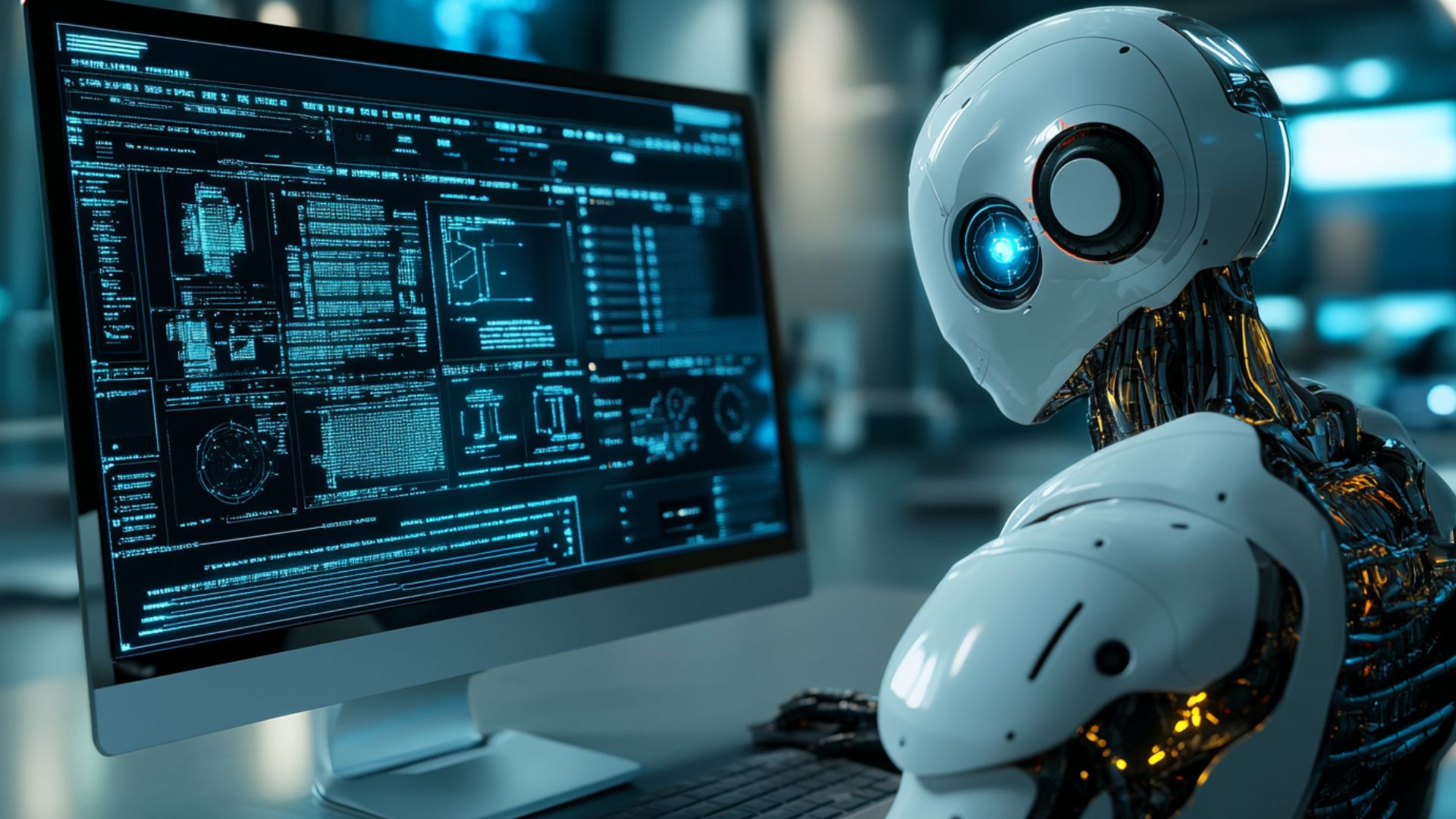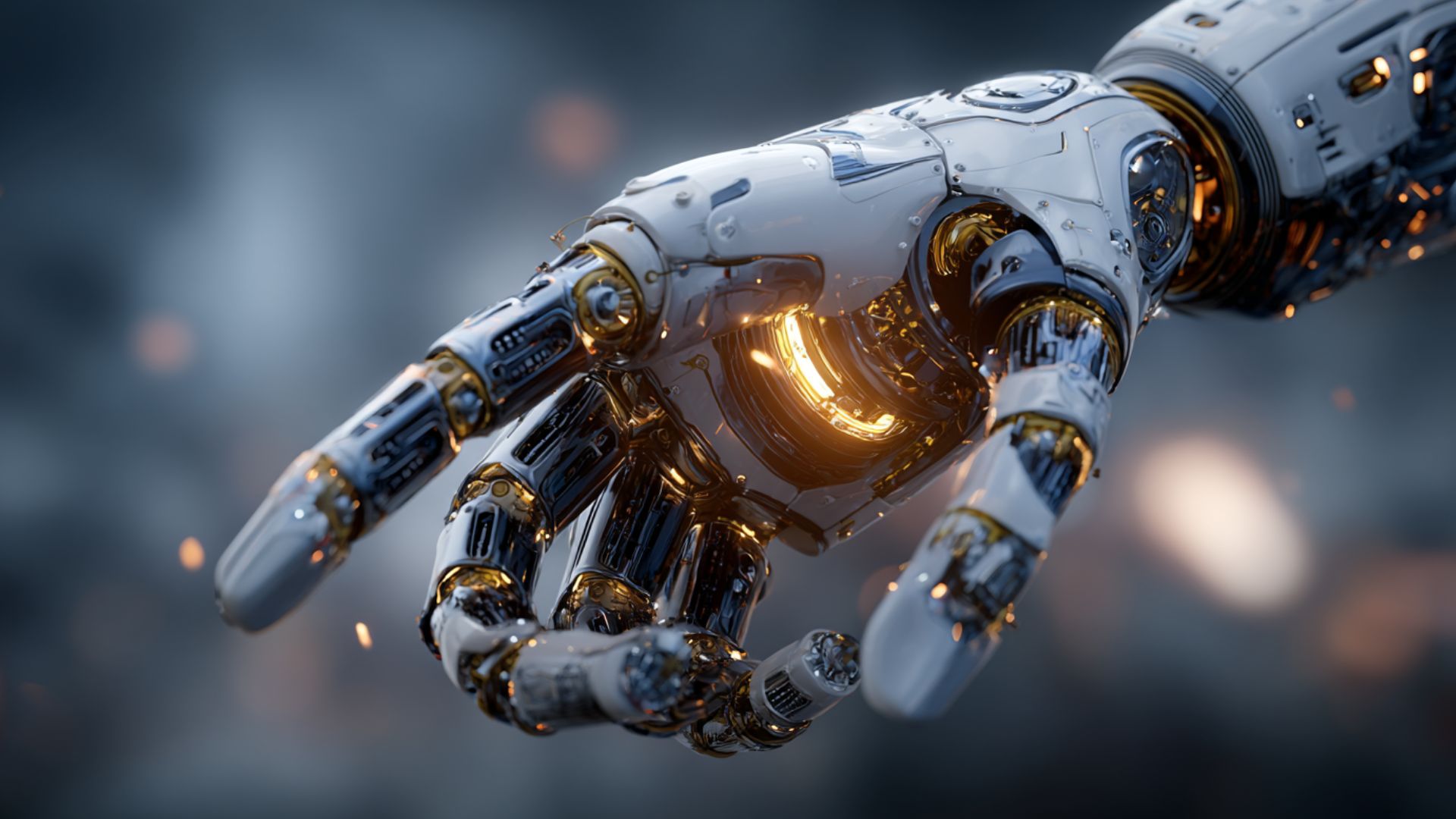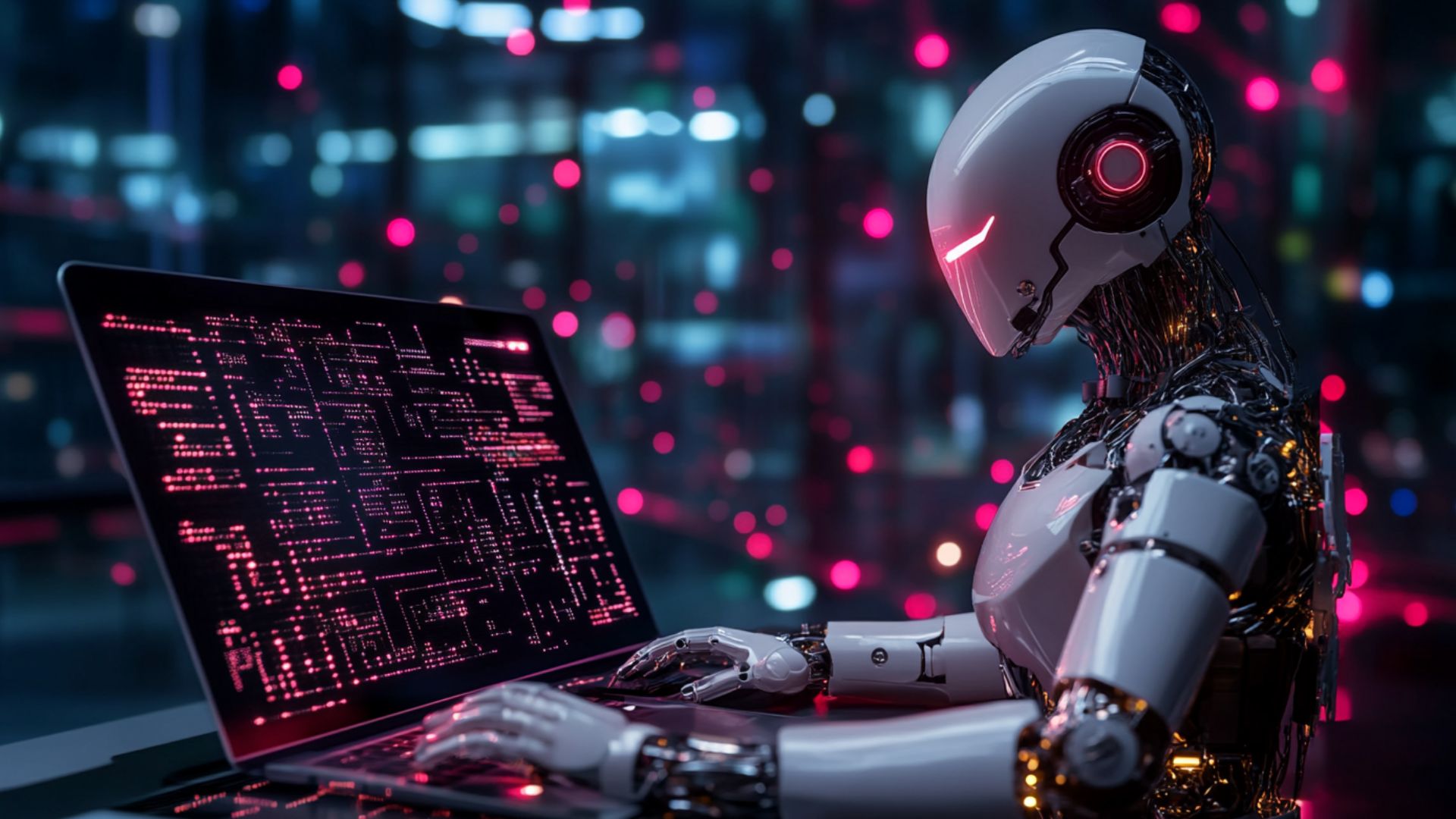Revolutionizing Design: The Impact of AI on Creative Processes

Design is all around us, shaping the world we live in. It is present in the products we use, the websites we visit, and the spaces we live in. For many years, the driving force behind design has been human creativity. Humans were the ones creating intricate designs and unique things. But now, artificial intelligence is a new player in this field.
AI is changing the game in ways we never imagined. It is becoming not just a tool but a creative partner. For example, AI graphic design has become a valuable tool for designers, helping them develop unique ideas.
In this article, we will look at how artificial intelligence is changing the design world. AI can generate ideas, suggest improvements, and create designs from scratch. This makes some tasks faster and easier for designers. But it also raises questions about the future of creativity. Will AI graphic design replace human designers? Or will it empower them? Get ready to find out how AI is changing the creative process.
How AI Tools Are Transforming Graphic Design
Let's discuss how AI-driven software automates routine tasks, allowing designers to focus on creativity:
- Routine Task Automation: AI tools for graphic design have become instrumental. They automate repetitive tasks. AI-driven software can now swiftly handle resizing images. It may adjust color schemes and align text. Adobe Photoshop’s Content-Aware Fill and Canvas Magic Resize streamline these processes. It allows designers to focus on more complex and creative aspects of their work.
- Efficiency Improvements: AI-driven tools significantly enhance design efficiency by automating routine tasks. This speeds up the workflow and reduces the likelihood of human error. Designers can allocate more time to brainstorming and executing creative ideas. This is rather than getting bogged down by manual adjustments.
Let's examine how AI algorithms generate unique design elements and assist in the creative process. Here’s how:
- Unique Design Elements: AI-generated graphic design leverages machine learning. It creates unique design elements. They might not be easily conceived through traditional methods. AI algorithms analyze vast datasets of visual styles and trends. They generate new patterns, textures, and compositions. AI algorithms offer designers novel creative options.
- Creative Help: AI tools assist in the creative process. It suggests design improvements and inspires. Daz 3D and RunwayML propose new design variations and stylistic choices using AI. It helps designers explore fresh ideas and push the boundaries of their creativity.
AI tools transform graphic design by automating routine tasks and enhancing creativity. They allow designers to work more efficiently and explore new creative horizons. It ultimately leads to more innovative and impactful designs.
AI in Web Design: Streamlining Development

Artificial intelligence design significantly simplifies the creation of responsive elements for diverse platforms. AI-driven tools can automatically adjust layouts, images, and other design elements. They ensure that websites look and function well on various devices, including desktops and smartphones. This automation reduces the time and effort required for manual adjustments. It allows designers to focus on more complex aspects of web development. The Grid and Wix ADI utilize AI to create adaptive and responsive web designs. They cater to the needs of different users and devices seamlessly.
Artificial intelligence design is also crucial in analyzing user interaction data. It optimizes web design elements for a better user experience. AI algorithms can track and interpret user behaviors. These include click patterns, scroll depths, and navigation paths. By leveraging this data, designers can make informed decisions to enhance usability. They also streamline navigation and personalize content. It results in more engaging and user-friendly websites. Google Analytics and Hotjar provide AI-powered insights. They help refine web design to meet user expectations and improve overall satisfaction.
The Role of AI in Typography and Layout
AI graphic design tool capabilities transform typography. It enables the creation and recommendation of fonts. They are generally tailored to specific branding and aesthetic needs. AI algorithms can analyze brand attributes and visual styles to generate unique typefaces. They align with a brand's identity. Fontjoy and Fontsmith use machine learning to suggest font pairings. They enhance the design, ensuring consistency and visual appeal.
Artificial intelligence in design is revolutionizing how layouts are generally created and optimized. It assesses content and context to suggest optimal layouts. They enhance readability and engagement. AI can recommend the most effective arrangement of elements on a page. It analyzes text length, image dimensions, and user behavior. Tools such as Grid.io and Adobe's Sensei leverage AI to automate layout design. They ensure that the final product is aesthetically pleasing and highly functional. This intelligent layout approach helps designers create visually balanced, user-friendly designs. They improve the user experience.
AI-Driven Tools in Industrial Design: Pioneering Innovation
AI graphic design software significantly enhances the product design process. It makes it more innovative and efficient. Here is how:
- Conceptualization: AI is revolutionizing the early stages of product development. It assists designers in generating and refining concepts. AI algorithms analyze market trends, consumer preferences, and existing designs. It provides insights and suggestions that drive innovation. Autodesk's Generative Design uses AI to explore various design possibilities. These are based on user-defined criteria. It leads to novel and optimized solutions.
- Design Refinement: AI graphic design software helps refine details. It ensures that the final product meets aesthetic and functional requirements. AI-driven tools can simulate real-world conditions. Such as stress tests and material behaviors. Such tools predict a product's performance. This predictive capability allows designers to make data-driven adjustments and improvements. They can do it before moving to the manufacturing stage.
- User Experience Integration: Design and AI can also integrate client feedback into the design process. It analyzes data from user interactions to refine product features and usability. This iterative approach ensures that the final design aligns with user needs. It enhances satisfaction and effectiveness.
Let's explore rapid prototyping and its key points:
- Speeding Up Prototyping: AI significantly accelerates this phase. It automates the generation of prototypes and predicts their performance. AI will create graphics and models based on design specifications. They enable rapid iteration and testing. AI tools can generate digital prototypes that simulate various scenarios. They allow designers to assess the viability of different design approaches quickly.
- Outcome Prediction: AI algorithms predict how prototypes will perform under different conditions. They help to identify potential issues early in the process. For instance, AI can forecast structural integrity, material wear, and ergonomic factors. They reduce the need for physical prototypes and costly iterations.
- Improvement Suggestions: They are generally based on simulation results and user feedback. How can AI be effectively used for graphic design? This process involves leveraging these insights to recommend design modifications. AI analyzes performance data to enhance functionality, durability, and user experience. Designers should integrate AI’s recommendations. They can refine prototypes to meet user needs and improve overall design quality.
The Ethical Implications of AI in Design

Let's explore how to address the potential biases embedded in AI tools. We will talk about their impact on design choices. Here's crucial information:
- Embedded Bias: AI tools often reflect the biases in their training data. They can lead to skewed or unfair design outcomes. When AI systems create graphics with AI, they may perpetuate stereotypes. They can reinforce existing inequalities. This is possible if the data used to train them is not diverse or representative. AI trained primarily on Western-centric design preferences may not account for cultural diversity. It happens in global design projects.
- Impact on Design Choices: Biases embedded in AI tools can influence it. Design choices might unintentionally exclude or marginalize certain groups. For example, an AI tool generates product designs or advertisements. It may favor aesthetics or styles that cater to a specific demographic. It potentially overlooks the needs or preferences of other groups. This can lead to designs that lack inclusivity and do not resonate with a diverse audience.
- Mitigating Bias: It's crucial to use diverse and representative datasets. They help to train AI creative design systems. Such datasets implement ongoing monitoring and adjustments. They can address these issues. Designers and developers should work collaboratively. They will ensure that AI tools are tested for fairness and inclusivity. Designers strive to reduce biases and enhance the ethical impact of their outputs.
Now, we will talk about intellectual property challenges. These include:
- Creativity and Ownership: How to use AI for graphic design raises questions. They are about the nature of creativity and ownership in design. AI systems generally challenge traditional notions of intellectual property. They contribute significantly to creating designs. When AI generates unique patterns or designs, it can be unclear who owns the rights to these creations. It may be the designer, the user of the AI tool, or the developers of the AI itself.
- Authorship and Credit: AI's role in design complicates traditional concepts of authorship. If an AI system produces a design. Human designers subsequently refined or utilized it. Determining the degree of AI involvement in a photo versus designer input becomes challenging. This ambiguity can impact how credit and compensation divide design projects.
- Legal Frameworks: Current intellectual property laws may not adequately address the complexities. AI generally introduces them in design. There is a growing need for legal frameworks. They recognize and adapt to the role of AI in creative processes. It ensures transparent guidelines for the ownership and protection of AI-generated works.
Integrating AI graphic design tools presents ethical challenges. They are generally related to bias, fairness, and intellectual property issues. Addressing these concerns requires thoughtful consideration and proactive measures. They ensure that AI tools contribute positively and equitably to the design field.
Future Trends: AI's Growing Role in the Design Industry
We will explore future developments in AI. They predict design trends and consumer preferences. Here they are:
- Trend Forecasting: AI's potential to predict design trends is expanding rapidly. Future developments in AI will leverage advanced algorithms and big data analytics. They forecast emerging design trends and consumer preferences. AI can identify patterns and predict what will be popular. It analyzes historical design data, social media trends, and market behaviors. This capability allows designers to stay ahead of trends and create designs. They resonate with target audiences.
- Consumer Insights: AI tools will increasingly integrate with consumer behavior analytics. They offer personalized design recommendations. AI understanding individual preferences and purchasing patterns. It can suggest design elements. They are more likely to appeal to specific demographic segments. This predictive ability helps designers tailor their work. It meets evolving consumer demands and enhances market relevance.
- Design Evolution: AI will continue to evolve. It improves its ability to anticipate design aesthetics and functionality changes. This includes forecasting shifts in visual styles, color palettes, and material choices. AI's predictive models will enable designers to adapt their strategies proactively. They incorporate innovations that align with future market needs.
Let's discuss collaborative AI. Here are the key aspects:
- AI as a Creative Partner: Design and AI are set to become increasingly integrated. AI acts as a collaborative partner in the creative process. Future AI tools will automate routine tasks. They engage in creative brainstorming and creativity. AI offers suggestions and generates novel ideas. It will enhance human creativity and push the boundaries of innovation.
- Enhanced Creativity: AI will facilitate new forms of creative collaboration. It provides designers with tools to generate and refine design concepts. In graphic design, AI serves as a resource for exploring new styles and techniques. The designers can then build upon it. This collaborative approach can lead to the development of unique and groundbreaking designs. They blend human intuition with AI's computational power.
- Workflow Integration: Future AI systems will seamlessly integrate into design workflows. They assist with everything from concept generation to final execution. What does AI stand for in graphic design? It is a powerful ally that enhances capacity. AI can work alongside designers to streamline processes and improve accuracy. It reduces time spent on repetitive tasks. AI allows designers to focus more on strategic and creative aspects of their work.
AI's role in the creative industry is set to grow. Predictive design models offer insights into future trends. Collaborative AI is becoming a vital partner in the creative process. This evolution promises to drive innovation and redefine how design is approached and executed.


